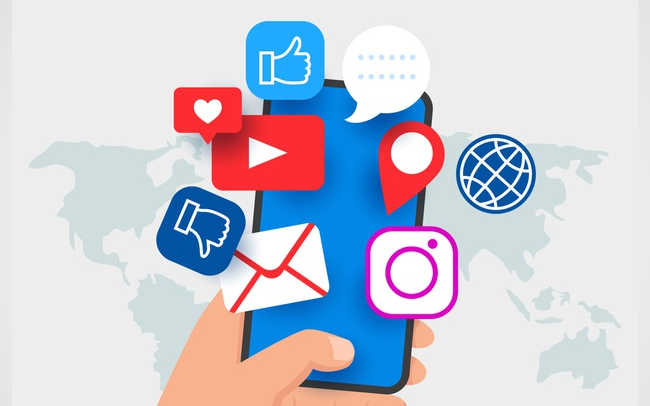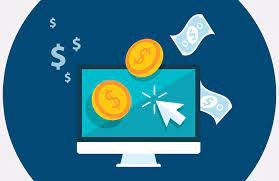Hello!
For the longest time, businesses have been able to collect vast amounts of data for marketing campaigns. Moreover, they’ve been able to do so quickly, easily, and without effort with third-party cookies. But that’s all changing. Today, first-party data is the star of the show.
In 2024, Google announced the phase-out of third-party cookies. Now, marketing teams must rethink their data-collection methods. The best change they can make is prioritizing first-party data.
 While this may be an unwelcome turn of events for many marketers, it’s actually for the best in the long run. For one, this helps to protect customers’ privacy. But it also means marketers can focus their time and effort on collecting higher quality, more helpful information on their customer base: first-party data.
While this may be an unwelcome turn of events for many marketers, it’s actually for the best in the long run. For one, this helps to protect customers’ privacy. But it also means marketers can focus their time and effort on collecting higher quality, more helpful information on their customer base: first-party data.
Yes, first-party data is becoming more relevant. But it’s always been a valuable asset to a marketing campaign. First-party data is collected directly from customers and users, meaning it’s a more accurate, reliable source of information to build campaigns.
This also means the data has a higher level of context and relevance to your business. Moreover, the collection process—contacting customers and getting to know them—helps to build trust, loyalty, and stronger relationships with your customers.
With all that said, first-party data does have a drawback: It can be more labor-intensive to collect. Luckily, we’re here to help with that.
This article will guide you through first-party data, why it’s more important than ever, and the best ways to collect it. As a result, you can build more effective, efficient marketing campaigns.
Phasing out third-party cookies and identifiers
 In response to users’ concerns over privacy, Google, Apple, Mozilla, and other browsers have announced plans to phase out support for third-party cookies.
In response to users’ concerns over privacy, Google, Apple, Mozilla, and other browsers have announced plans to phase out support for third-party cookies.
Most significantly, Google’s phase-out for Chrome begins later this year and is due to be completed during 2024.
This will spark a massive shift in the digital marketing ecosystem.
Since the cookie’s invention in 1994, digital marketers have relied on these little user information packets to build marketing campaigns and personalize ads for audiences. Today, the digital marketing industry is worth over $600 billion—and a large part of that is due to the monolithic influence of cookies.
Without the third-party cookie, marketers are losing a vast data source on users. This will make it significantly more challenging to track their users across the web, gather information on them, and tailor ads for them.
It’s likely—for a little while, at least—that this will lead to a decline in the effectiveness of digital advertising. It could even lead to a reduction in the overall size of the digital marketing industry.
This is why one of the most prominent digital marketing trends for 2024 will be the widespread embracing of first-party data. Marketers will no longer be able to rely on third-party cookies to provide detailed user profiles of their target audience.
Over the next year, businesses that rely on cookies for digital advertising must completely rethink their data-gathering strategy to remain relevant in the post-cookie era. That’s why it’s critical that you get ahead of the curve and start learning how to utilize first-party data now.
What is first-party data?
As mentioned earlier, first-party data is the information collected directly from users or customers who have interacted with your organization or brand.
 You can collect this data in various ways and through multiple channels, including:
You can collect this data in various ways and through multiple channels, including:
- Website and mobile app usage
- Social media platforms
- Omnichannel communication with customer service teams via voice over IP (VoIP) phone and online chats
- Customer surveys or feedback forms sent over email
- Physical questionnaires handed out at business fairs or brick-and-mortar stores
Beyond marketing, it’s a valuable means of collecting customer feedback and optimizing your products and services. Crucially, it’s also an excellent way to get to know your customers better so you can provide more customized marketing.
 Because you’re the one that gathered it, your business owns this data wholly, granting you complete control of its use. Since it came directly from your audience, leveraging it is the best way to personalize marketing and customer experiences.
Because you’re the one that gathered it, your business owns this data wholly, granting you complete control of its use. Since it came directly from your audience, leveraging it is the best way to personalize marketing and customer experiences.
This is why first-party data is the most valuable and reliable type of data. It reflects the actual interactions and behaviors of your customers.
Additionally, collecting first-party data is a great way for organizations to build stronger brand-customer relationships. It’s a way of communicating to your customers and users that you value their input.
First-, second- and third-party data: What’s the difference?
The defining distinction of each data type is the means by which you acquired it. As we know, first-party data is the data you’ve collected from your customers.
Second-party data is collected by other businesses from their customers and shared with you (essentially, someone else’s first-party data). Usually, the other company is a trusted partner in an adjacent industry to yours.
 In this instance, the data is often shared as part of an agreement between two parties to share each other’s data to help grow their databases.
In this instance, the data is often shared as part of an agreement between two parties to share each other’s data to help grow their databases.
For example, a travel website might partner with an airline to access their customer booking data and use it to personalize travel recommendations.
Third-party data is collected from many websites and browsers, then gathered together, segmented, and sold to businesses. Data brokers, market research firms, social media platforms, and other providers tend to sell this data.
Third-party data offers broad market insights and is helpful for upscale marketing efforts or reaching new audiences. Let’s say an ecommerce company based in the United States wants to expand its customer base to Singapore.
As well as buying a Singapore domain, they would purchase third-party data to leverage when targeting and advertising to the Singaporean market.
Which is most valuable?
Of course, each data type has its place. But there are some discerning factors in the character of each. The means of data collection significantly impacts the use and value of that information.
 Primarily, the reliability of first- and second-party data is significantly higher than that of third-party data. Just as web developers store code in a GitHub private repository to access and view different files, businesses typically store first- and second-party data on their CRM or database.
Primarily, the reliability of first- and second-party data is significantly higher than that of third-party data. Just as web developers store code in a GitHub private repository to access and view different files, businesses typically store first- and second-party data on their CRM or database.
This means you know the source of the information and how it was gathered, so it is highly reliable. However, third-party data is programmatically gathered on a considerable scale. In most cases, you won’t know the source of third-party data, so the reliability is much more questionable.
Secondly, the accuracy of each kind of data, or its capacity to leverage for the targeting and customization of marketing, can dramatically differ.
First-party data is king here. Not only is it from your customer base, but it’s also been collected by your business.
 It relates specifically to those interested in your products, and it’s much more granular, allowing you to segment it more easily and target specific demographics within your customer base.
It relates specifically to those interested in your products, and it’s much more granular, allowing you to segment it more easily and target specific demographics within your customer base.
Second-party data will likely be able to provide some insight into your target audience. But since it’s not from your specific customers, there will be a lot that won’t relate to your needs.
Third-party data is gathered en masse and is publicly available for any business to buy. As such, it won’t produce precise insights for targeting your specific audience.
How can you use first-party data?
Until now, marketers’ main use for first-party data was to augment the information and fill in gaps in user profiles produced from third-party data. Now that marketers are being weaned off third-party cookies, first-party data will take a lot more focus in marketing campaigns.
The truth is first-party data has a host of uses, and it’s about time businesses started devoting to it the attention it deserves.
Let’s look into three main uses for first-party data.
Personalizing ads
 Perhaps unsurprisingly, this is the most relevant use for marketers. First-party data helps you better understand individual customers’ preferences, purchase history, and online behavior.
Perhaps unsurprisingly, this is the most relevant use for marketers. First-party data helps you better understand individual customers’ preferences, purchase history, and online behavior.
With this information, you can tailor messages and recommendations for them. It can also help with retargeting marketing. You might find opportunities to pull back lapsed customers by seeing what’s currently working.
This kind of data is also highly granular, meaning you can segment your audience into distinct groups based on shared characteristics.
From this segmented customer base, you can derive insights into specific demographics, allowing you to identify high-value customers and potential growth opportunities, and support research into new markets.
Customer retention
Gathering first-party data involves reaching out to your existing customer base and building relationships. With this information, you can identify ways to optimize UX, offer personalized rewards, and develop targeted loyalty programs.
Reaching out in this way and then personalizing your products and services shows your customers you value them. It’s also instrumental in building customer loyalty and retention initiatives.
Boosting sales
 With all the information you gain from first-party data, you can find ways of making more from your existing customers and identify opportunities to expand your customer base.
With all the information you gain from first-party data, you can find ways of making more from your existing customers and identify opportunities to expand your customer base.
By analyzing customer purchase history and browsing behaviors, you can identify complementary products that appeal to them. This will help you increase average order size, identify cross-selling opportunities, and increase post-purchase engagement.
Then, leveraging first-party data can support market research efforts, inform strategic decision-making, and help identify emerging opportunities or changing customer demands.
7 ways to collect first-party data
First-party data does have a downside: Namely, it’s a lot more challenging to connect.
Unlike third-party data, where data brokers can gather it as quickly as websites gather cached data, collecting first-party data requires hard work from your side. It’s worth it, though. As we’ve already outlined, you’ll get significant ROI on the effort you put in.
Here are best practices and tips for collecting first-party data for your marketing campaigns.
1. Website and mobile analytics
 You can use web analytics tools like Google Analytics or Adobe Analytics on your website to track user behavior. With these, you’ll get info on customers’ page views, clicks, and conversions.
You can use web analytics tools like Google Analytics or Adobe Analytics on your website to track user behavior. With these, you’ll get info on customers’ page views, clicks, and conversions.
These insights provide valuable information about user preferences, engagement, and the customer journey, which in turn will inform your marketing campaigns.
Similarly, mobile analytics can be collected by incorporating a Software Development Kit (SDK) such as Firebase Analytics or Flurry into your mobile app. If your business runs multiple applications, you’ll have to find a way of allowing these apps to communicate and share data with one another. Once you’ve done this, the SDK will enable you to track user activity, app installations, in-app purchases, and more.
2. Customer registration and account creation
Ask your users to create accounts or register on your website or app. When they do, you’ll acquire their names and email addresses, so you can follow up to ask for more information.
Remember, you can add more questions on the registration form to collect demographics and user preferences, too.
 With this in mind, there are two considerations to improve conversions:
With this in mind, there are two considerations to improve conversions:
- Offer incentives: Exclusive content or personalized recommendations are an easy, cost-effective way to motivate users to share their data.
- Keep it concise: Use multiple choice questions on your registration forms. Asking people to type out lengthy answers can deter them from completing the registration process and lower conversion rates.
3. Online surveys and feedback forms
Conducting online surveys and feedback forms on your website, mobile app, or email campaigns provides an opportunity to gather direct input from your customers. Ask targeted questions about their preferences, satisfaction levels, and specific feedback to gain insights and understand their needs better.
Again, multiple choice will result in a higher response rate, as will conducting surveys via your website and app over email. Of course, you want to ensure your site and app are cloud native so users can respond from any device.
People are busy, so you must make sure it’s as easy as possible for them to provide information.
4. Transactional data and purchase history
 Collect data from customer transactions, including what products or services they have purchased, the frequency of purchases, order values, and other relevant information. This data can help you understand customer preferences, identify cross-selling or upselling opportunities, and personalize future offers.
Collect data from customer transactions, including what products or services they have purchased, the frequency of purchases, order values, and other relevant information. This data can help you understand customer preferences, identify cross-selling or upselling opportunities, and personalize future offers.
You’ll want to invest in solid Customer Relations Management (CRM) software and a Customer Data Platform (CDP) for this. These will help you store the data you collect, manage it more easily, and analyze it for more fruitful insights.
5. Social media engagement
Monitoring comments, direct messages, and social media mentions can be a worthwhile way of gaining insights into customers’ interests, sentiments, and feedback. Of course, you’ll have to encourage them to get in touch first. The best way to do this is to engage with them.
Social media platforms also offer audience insights and analytics that can provide valuable demographic and behavioral data. So make sure to capitalize on these.
6. Customer support interactions
Keep an eye on interactions between your customers and customer service team, such as emails, chats, and phone calls.
 Customer feedback is a veritable goldmine of first-party data. It provides heaps of insights into customer needs, pain points, and preferences.
Customer feedback is a veritable goldmine of first-party data. It provides heaps of insights into customer needs, pain points, and preferences.
Keeping note of what comes up during these interactions allows you to build a holistic understanding of your customers and identify avenues to improve the customer experience.
For instance, if the users of your electronic medical records platform keep asking “how can I fax from my computer?”, you might want to investigate alternative faxing solutions. This will make your users feel heard and valued. Moreover, it might be the feature that sets your app apart from other medical SaaS companies.
7. Offline interactions
This one won’t apply to ecommerce or SaaS businesses. But if you have physical locations, events, or offline touchpoints, make the most of them.
In-store purchases, event registrations, and loyalty programs are prime opportunities to gather customer information. Take advantage of these face-to-face interactions by collecting contact information, handing out surveys, and asking for feedback.
For businesses operating within the ecommerce realm, even without a physical presence, consider exploring partnerships with platforms like BigCommerce to offer exclusive discounts and benefits to customers with BigCommerce subscriptions. This approach can further incentivize your engagement and data sharing.
Also read:
- How Will Affiliate Marketers Profit From Direct Marketing Growth?
- Top 8 Skills to Succeed as a Modern Marketing Professional
- How to Protect Your Smarthome from Hacker
Capitalize on the potential of first-party data before it’s too late!
If this is your first time investigating first-party data, you might feel a little overwhelmed. We hear you.
 But if you want to be in a solid position when third-party cookies are phased out for good, you must start implementing first-party data collection strategies today. Following the steps in this article is a great place to start.
But if you want to be in a solid position when third-party cookies are phased out for good, you must start implementing first-party data collection strategies today. Following the steps in this article is a great place to start.
From here, you can develop robust marketing campaigns that target existing and potential customers based on their individual needs and interests.
Remember, change doesn’t happen overnight. Prioritize the methods and channels you want to collect data from, then build on your strategy from there. You’ll soon find that first-party data is brimming with benefits and can boost your campaign and business in more ways than one.
Thank you!
Join us on social media!
See you!






